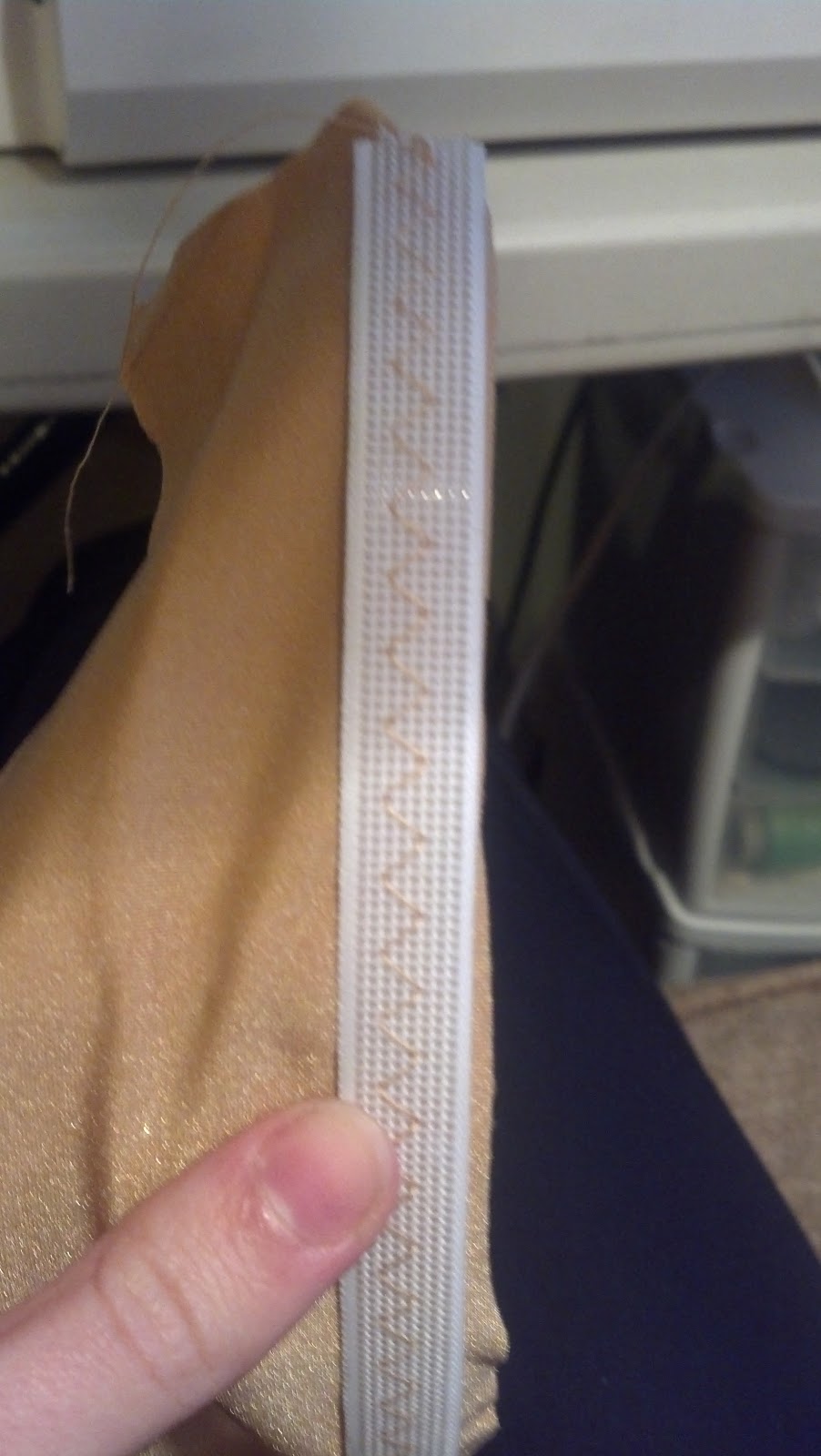I start with rigilene boning and a piece of lycra. The rigilene should be about an inch longer than the final circumference you want the bangle to be, and I cut my lycra about an inch longer than that so I have excess at the ends. I cut mine to be about 10" long, if I am remembering correctly off the top of my head. I actually just take the piece of rigilene and make a loop and shove my hand through it, checking to make sure it can actually get over the widest part of my palm. If I'm making multiple I'll then use the first cut piece as my template for the others. I cut my piece of lycra about 3.5-4 times as wide as the piece of rigilene, so I've got wiggle room.
Step one: stitch that sucker. I align the lycra edge with the rigilene edge (as best as I can) so that the lycra right side is down (if your lycra does in fact have a discernible right side) and so that the curve of the rigilene is also facing down (so you're stitching this to the inside first.I use a wide zig zag stitch on a long setting. The fewer times the needle must pierce the rigilene, the less chance of it bending and breaking! Use a heavy enough needle too as this stuff is THICK!
This picture shows the top side and the one below shows the underside. As you can see in the above picture, there's some overlap and rough edges. It happens, trim it down until you've got a nice lycra edge that is either flush with the rigilene or the rigilene slightly extends over it.
Fold over not once...
But twice until you've got two nice folded edges on both sides of the bracelet and you are again stitching with the inside of the bangle down.
Repeat the same stitching process as above. Here you will find that if you have more excess fabric, it is easier to pull it nice and snug in any places you need to. If your lycra is cut properly on the grain you will have less issues with the fabric buckling and getting bunching. Manage your fabric as it goes through the machine to get a nice surface.
Now that's a whole lotta excess fabric, so let's trim that down.
I also trimmed any excess off of the ends. I like to leave 1/4" - 3/8" on the ends to give the loop a little bit of a nicer finish rather than one really big blunt drop.
Loop! Overlap the ends until the circumference is the final desired circumference.
This is the toughest part. The loop is tiny and the machine foot likes to get in the way. Go. Slowly. I have bent/broken so many needles making these.
For this bracelet, I used a straight stitch in a slightly longer than normal length and went back and forth a couple times. Go slowly. I often now use a wide zig zag with a longer than normal stitch length to tack this part down because it gives less of a seam valley in the finished product. Either way, as you can see below, one attachment is not enough to keep the ends nice and snug.
I stitch it down about 1/2"-3/4" away, depending on how much excess length I have in the bracelet. Make sure both of these seams are going through both layers of rigilene or the rigilene can eventually start to poke through the lycra.
You can see in the picture below what I mean about the seam valleys. They'll be completely covered in rhinestones though, so if it doesn't bother you, don't worry about it.
And now you're ready to stone it!



























































